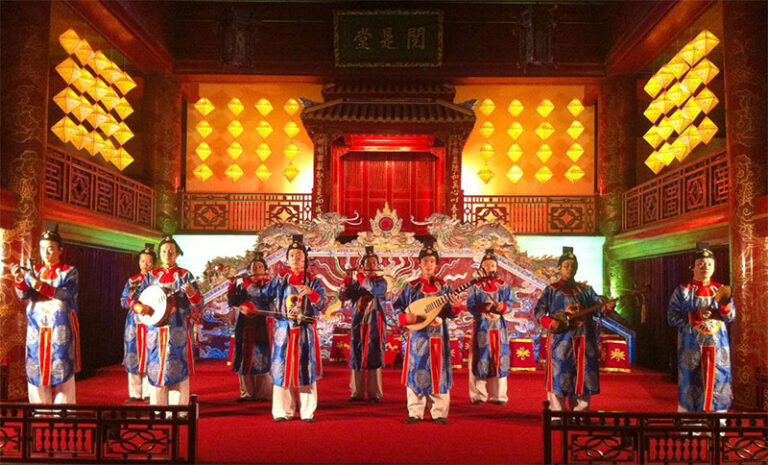
Traditional Vietnamese art, as well as modern Vietnamese art, are often overlooked by the international art world. Although the country was devastated by past wars and the challenges of globalization, Vietnamese artists have created a unique style and identity over the centuries. Painting and other art forms in Vietnam have a long history stretching from the Stone Age and Bronze Age, the period of Chinese rule, French colonialism, and anti-Americanism to the present day.
Contents
1. Development history of Vietnamese Traditional Arts
The birth of the world-famous, exquisitely carved Dong Son drums characterizes the flourishing period of Dong Son culture in Northern Vietnam. These objects demonstrate the outstanding bronze-casting talent of Vietnamese artisans and provide a fascinating glimpse into their lives in the early stages.
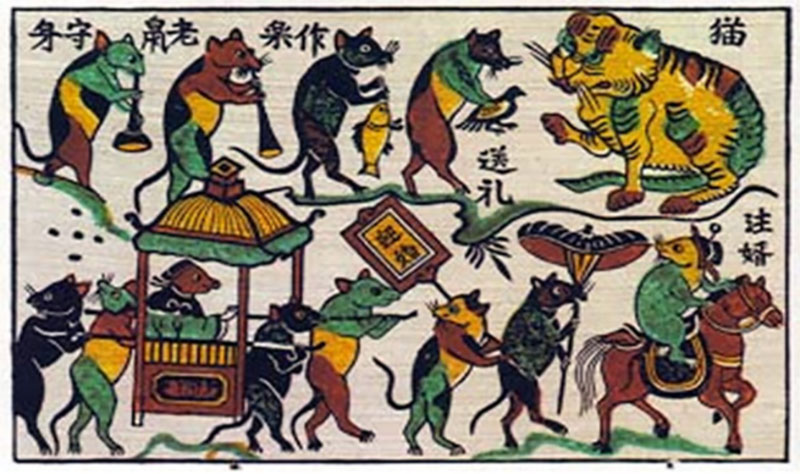
During the Chinese colonial period, the Vietnamese absorbed Chinese skills based on indigenous techniques, especially in ceramics and manufacturing. Vietnam experienced a golden age of architecture and art under the Ly and Tran dynasties. The Ly Dynasty and the Nguyen Dynasty were known for their porcelain and ceramic art. Vietnamese traditional art flourished under the Ngo-Tran dynasty from the 10th to the 15th century. The 11th century is considered the pinnacle of Vietnamese classic art. During the Ly Dynasty, Vietnamese artisans produced beautiful ceramics that were coveted throughout Asia.
In the 15th century, many traditional Vietnamese works of art and texts were destroyed by Chinese rule in Vietnam, leading to a severe loss of records from this and the previous period. The Ming dynasty significantly influenced the art that developed during this time. The last Vietnamese dynasties saw a resurgence of interest in ceramics as the Vietnamese reclaimed sovereignty over their lands. Vietnamese ceramics were transported through Asia from the late 15th century to the early 19th century.
Vietnam was a French colony in the mid-19th and early 20th centuries, and European control had a significant impact on artistic output in the Asian country, primarily through the establishment of École Supérieure des Beaux-Arts de l’Indochine in 1925. The institution left a lasting impression on many masters of modern and contemporary Vietnamese art. It was established to educate classical European methodologies and styles, leading to an intense conflict between the West and the East that can be seen in many paintings in Vietnam.
Few Vietnamese artists could study or practice outside of Vietnam during the 80 years of French rule, but they learned to use French processes with some traditional materials such as silk and lacquer…
After the anti-American resistance war, the 1990s saw a revival of Vietnamese expressive arts. Vietnamese artists continue to absorb Western influences and create works of art using conventional materials such as acrylic, oil paint, and lacquer on wood, as well as exploring the fields of installation, painting, conceptual art, performance, etc.
2. Traditional Vietnamese art forms
Vietnam has recently become one of the world’s favorite travel destinations. However, one of the most unique and remarkable aspects of Vietnamese culture is its art.
Vietnam possesses an extensive system of traditional art forms spanning all regions, and it is difficult to determine how many conventional art forms currently exist. According to preliminary assessments, about 70% of Vietnamese traditional art forms are performing arts, traditional music, visual arts, and architecture…
Vietnamese traditional art plays a role in expressing the unique identity of the Vietnamese people, is an integral part of the character, spirit, and culture of the Vietnamese people, and is a part of history and national pride…
Traditional art is also vital in Vietnamese people’s material and spiritual life. Vietnam is known as one of the countries with the most traditional festivals in the world, with about 8,000 large and small festivals each year, and in each festival, there are indispensable conventional art performances.
2.1. Music
Vietnamese traditional music, folk music, and folk songs were born very early. Since ancient times, Vietnamese residents have been very passionate about music; music is an indispensable part of life. Therefore, in the process of historical development, residents here have constantly created many musical instruments and genres to express their emotions, gain strength and work spirit, or escape from the entanglements of everyday life.
Vietnamese traditional music is rich because of the accumulation of genres from many different eras and because of its ethnic diversity. Vietnam has 54 ethnic groups, meaning there are 54 traditional music backgrounds. It is the same music genre, but each ethnic group has its method of expression, performance, and melody. Private.
If divided by genre, we have Royal music, Cheo, Tuong, Hat Xam, Don ca tai tu, folk songs, Ca tru…
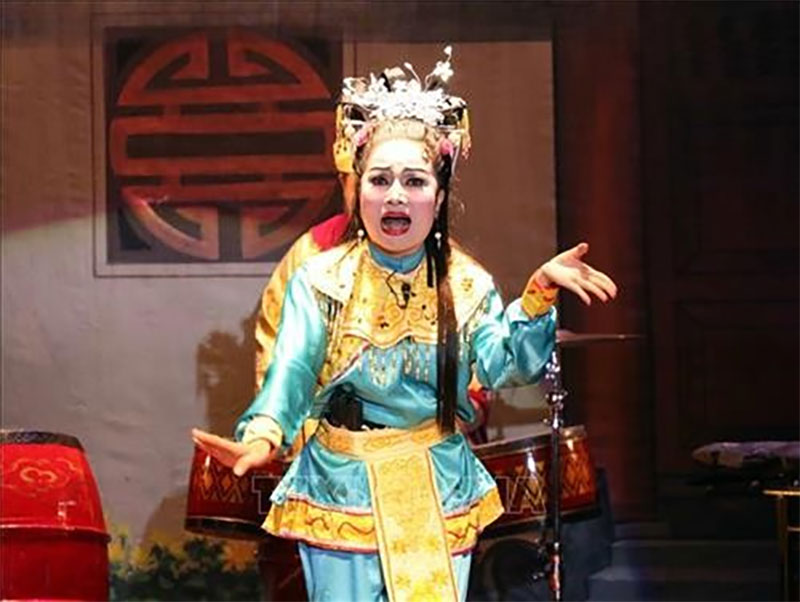
If divided by region, we have Southern traditional music, Central region, Central Highlands, Northern region… or smaller divisions according to each cultural region.
If classified by type, it can be solo singing, duo singing, group singing, etc.
In traditional music, people also use musical instruments such as monochord, erhu, stork, dan day, pliers, etc. Musical instruments are specialized for one type of music; some are used for many kinds. For example, the bottom, drum, and adoring drums are specialized for Ca Tru, while the two are for Xam…
2.2. Cinema
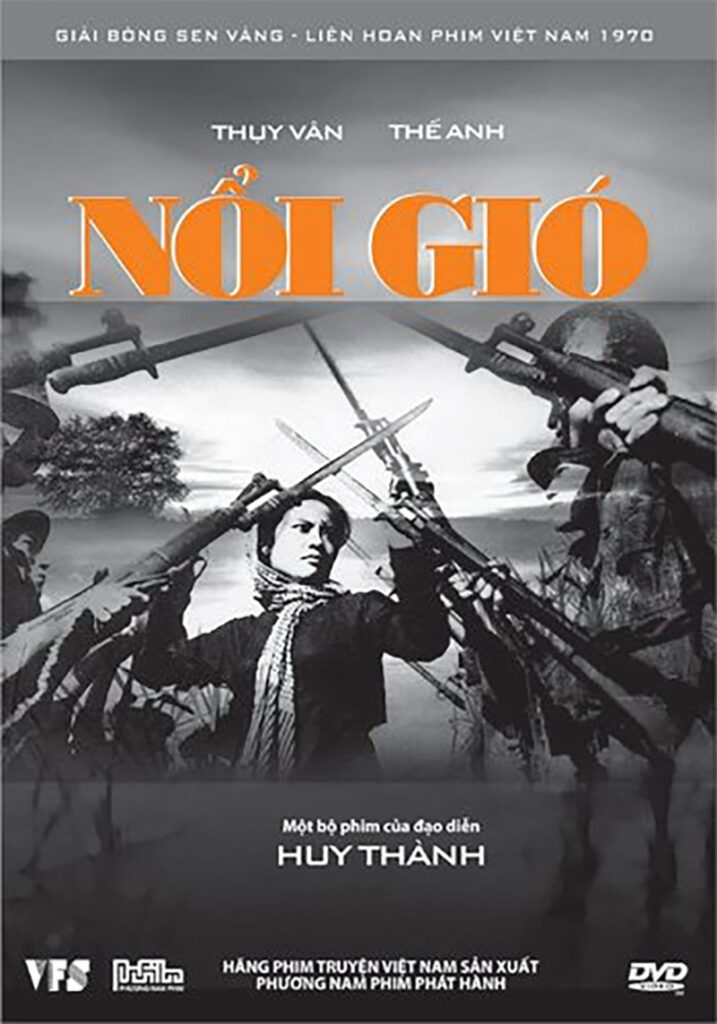
Vietnamese cinema has more than 70 years of birth and development. Since the historic August Revolution of 1945, the first films were born in two cinema centers: Bung Bien (Long An) and Doi Co (Thai Nguyen). These are realistic, vivid documentaries about our people’s heroic fight against the French colonialists, which have become invaluable historical evidence today.
In 1959, the movie “Shared a River” (Chung Mot Dong Song) (1959) was released and made a big splash, becoming Vietnam’s first plastic feature film since its birth. After the success of this film, a series of films on the topic of revolution and resistance against French colonialism, the struggle to liberate the South, unify the Fatherland, and build socialism in the North were produced.
Vietnamese cinema also began to be recognized internationally, shown through a series of awards at the Moscow Film Festival for the documentary “Water Returns to the North Hung Hai” (Nước về Bắc Hưng Hải) (1959), and the Leipzig Film Festival (Germany) for “People from my hometown” (Nhung nguoi que huong toi) (1970)…
The Doi Moi (innovation period) paved the way for the birth of private cinema. Le Hoang’s movie “Dancing Girl” (2003) was the most significant box office “boost” – collecting 21 billion VND. More and more private units participate in the film market.
2.3. Architecture
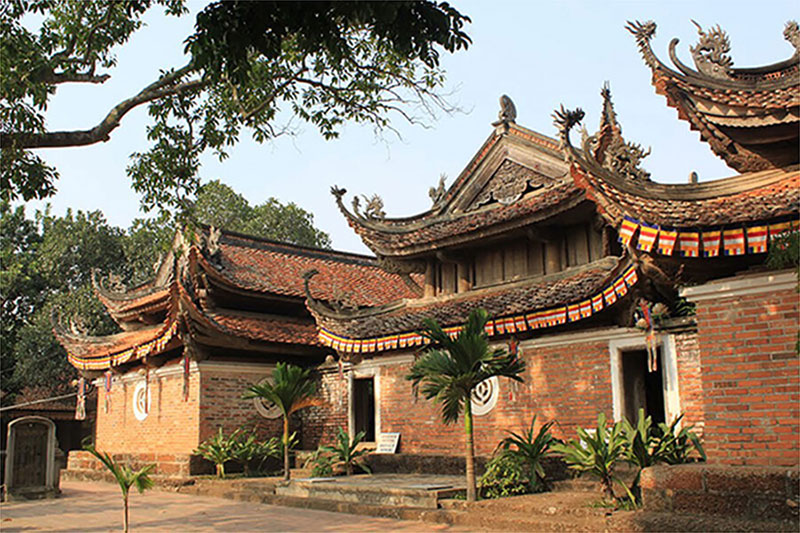
With a rich history and long-standing culture, traditional Vietnamese architecture has unique cultural values. Today, with the development of socio-economics and the penetration of new architectural features, traditional national architecture still maintains a strong foothold and is an indispensable part of Vietnamese culture.
Vietnam has over 4,000 years of history with many historical events and incidents. All of these things contribute to creating unique characteristics in traditional Vietnamese culture.
Besides its unique geographical location, Vietnam is also the intersection between two major ancient civilizations of Asia – India and China. At the same time, it is also a place of transit and trade for many other cultures in history.
Therefore, traditional Vietnamese architecture is also influenced by this cultural interference. In general, works of this style will show attachment to the village community while ensuring compatibility with the climate and culture of each locality and region.
Since the late 19th century, with the French colonial rule, Vietnamese architecture began to apply Western architectural and construction models and methods widely, and many works still exist today in Vietnam. Urban areas, especially in Hanoi, have left behind a beautiful and unique architectural nuance
Essential characteristics of traditional Vietnamese architecture
- Ethnicity and locality
- Simple, modest, gentle, and generous
- Closely integrated with the landscape
- Harmonious and symmetrical layout
- Beautiful colors rich in folk character
- Using local materials mainly
2.4. Art
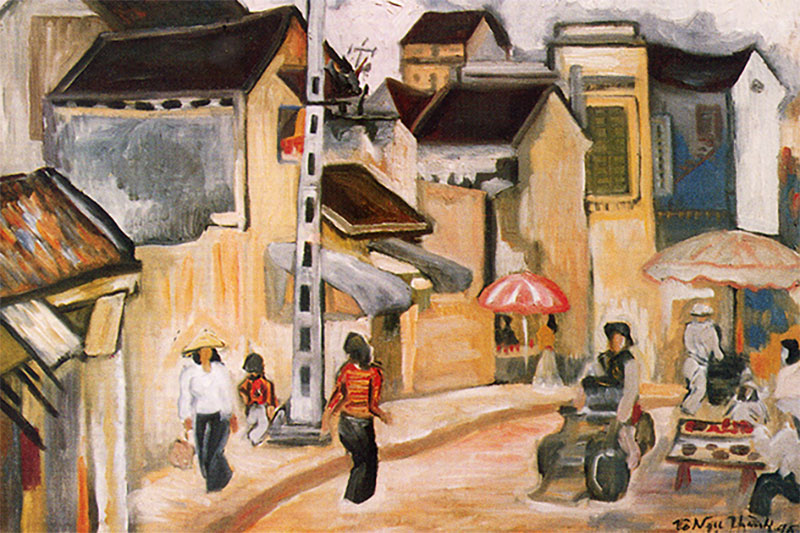
Vietnamese Fine Arts refers to the traditional and contemporary visual arts of Vietnam. It has a rich history spans various dynasties and periods, and it encompasses a wide range of artistic forms, including painting, sculpture, ceramics, lacquerware, and more. Here are some critical aspects of Vietnamese fine arts:
Traditional Vietnamese Painting: Traditional Vietnamese painting has a long history, with roots in folk art and classical Chinese painting. Over time, it developed its distinctive style, often featuring natural landscapes, village scenes, and daily life. Famous traditional painting styles include Dong Ho and Hang Trong.
- Lacquerware: Vietnamese lacquerware is a traditional art form that involves applying layers of resin from the lacquer tree sap to create a glossy and durable finish. Lacquerware items often include paintings, trays, and various decorative objects. The process of creating lacquerware requires intricate skills and attention to detail.
- Sculpture: Sculpture has been an essential part of Vietnamese fine arts, particularly in the context of temple and pagoda decoration. Traditional sculpture often features figures from Buddhism, Confucianism, and folk beliefs. Contemporary Vietnamese sculptors also explore various materials and themes.
- Contemporary Art: In the 20th century and beyond, Vietnamese fine arts underwent significant changes with the influence of modern and contemporary art movements. Artists began experimenting with new styles and mediums, addressing social, political, and cultural themes. Contemporary Vietnamese art has gained recognition both domestically and internationally.
- Installation Art: In recent years, Vietnamese artists have also embraced installation art, which involves creating site-specific, three-dimensional artworks. These installations often address contemporary issues and engage viewers in a multi-sensory experience.
- Vietnamese fine arts have evolved throughout history, blending traditional and contemporary influences. Today, a diverse and vibrant community of artists contributes to the cultural landscape of Vietnam and the global art scene.
2.5. Vietnamese theater arts
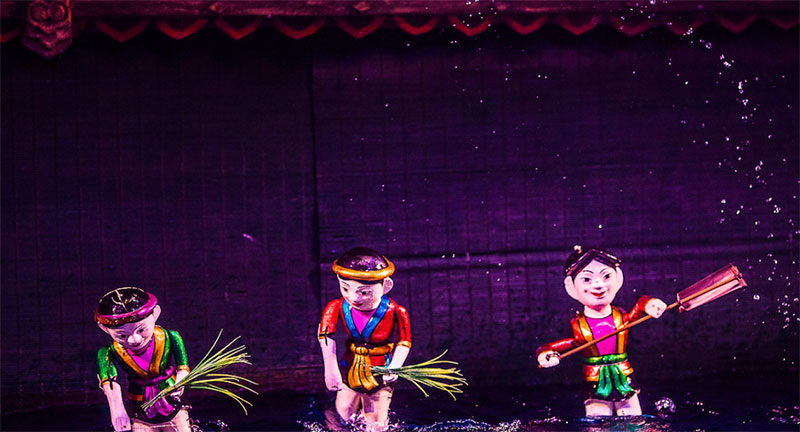
Vietnam’s national cultural and folk art treasure has several unique traditional theater forms imbued with a cultural identity that has existed for a long time, such as cheo singing, tuong singing, water puppetry… and newer ones like Cai Luong and folk opera.
* Cheo: This is a type of theater with a strong national character, with a smooth combination of a series of elements: singing, dancing, music, and drama with a highly unique combination.
* Tuong: A unique traditional theater art form of Vietnam formed based on dance, music, and folk performances that have existed for a long time and are very rich in the Vietnamese people.
You can discover more traditional Vietnamese dances here.
* Puppetry: The art of puppetry has existed for about 1,000 years, developing most strongly in the 11th – 12th centuries. Including two types: land puppetry and water puppetry…
* Folk opera: After the August Revolution, folk opera formed and developed based on folk songs and unique folk cultural performances typical for each region, such as Bai Choi folk songs, Hue folk songs, Vi and Giam Nghe Tinh folk songs, etc.
* Cai Luong: An art form combining opera and amateur music and influenced by Western drama, formed in 1918 in the South. Over more than 100 years of history, Cai Luong has become a form of theater art closely associated with the spiritual life of people not only in the Southern region but throughout the country.
These types of theater performances demonstrate the diversity and depth of Vietnamese art and culture, from traditional to contemporary, from folk art drama to leading art events.
2.6. Literature
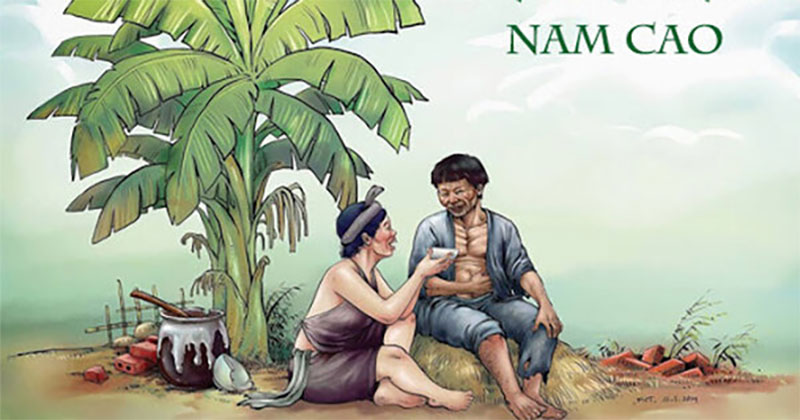
Over thousands of years of history, Vietnam has built a vibrant literature, truly reflecting historical fluctuations and the soul and character of the Vietnamese people in the process of building and defending the country…
Vietnamese literature includes two parts: folk literature and written literature.
Folk literature was born in ancient times on the cultural foundation of Dong Son in the North, Sa Huynh in the Central, and Dong Nai in the South. The development of folk literature is associated with the Hung King era, marking the formation of national-national consciousness with many unique genres such as myths, legends, epics, fairy tales, jokes, and fables. Stories, poems, folk songs, proverbs, riddles, rhymes… In Vietnamese literature, folk literature has a significant place to store spiritual and intellectual values. National wisdom and language became a solid foundation for the formation of later written literature.
By the 10th century, after regaining independence from the Chinese dynasties, Vietnam began to build written literature based on borrowing Chinese characters. This is a foreign text, but Vietnamese literature is the voice of an independent country. Right from the Ly – Tran – Le dynasties, Chinese literature achieved many unique achievements and was not inferior to Chinese Han-Tang literature. Starting from the 12th – 13th centuries, along with the high development of national consciousness, Nom script was born and achieved outstanding achievements with the National Poetry Tap by poet Nguyen Trai. This collection of poems marks the complete development of national literature in the national language. From the 16th century onwards, Nom literature increasingly developed and gradually overwhelmed Chinese literature. Along with the development of Nom literature, the literary genre system was also vietnameseized to become a national academic asset. The achievements of Nom literature are highly crystallized in the works of Nguyen Du and Ho Xuan Huong, especially, with the masterpiece The Tale of Kieu.